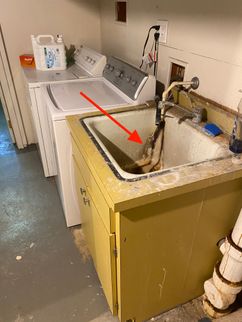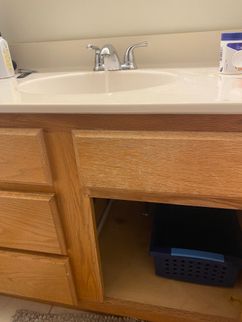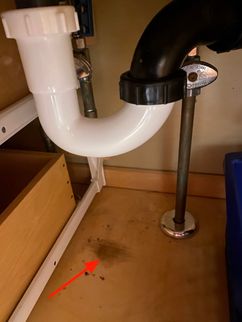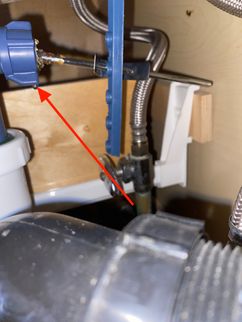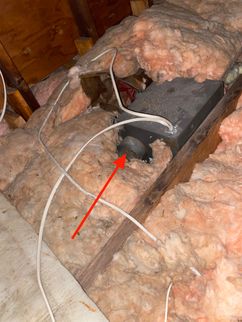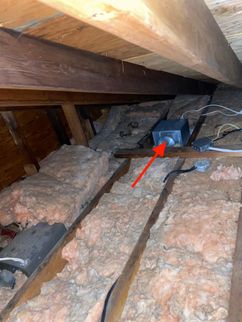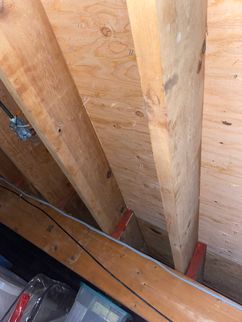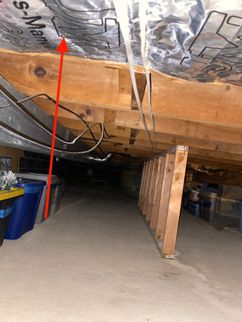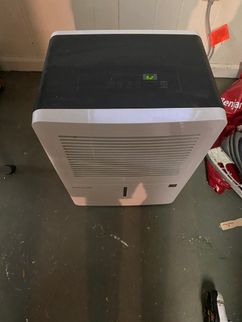The Scope and Purpose of a Home Inspection
Purchasing property involves risk
The purpose of a home inspection is to help reduce the risk associated with the purchase of a structure by providing a professional opinion about the overall condition of the structure. A home inspection is a limited visual inspection and it cannot eliminate this risk. Some homes present more risks than others. We cannot control this, but we try to help educate you about what we don’t know during the inspection process. This is more difficult to convey in a report and one of many reasons why we recommend that you attend the inspection.
A home inspection is not an insurance policy
This report does not substitute for or serve as a warranty or guarantee of any kind. Home warranties can be purchased separately from insuring firms that provide this service.
A home inspection is visual and not destructive
The descriptions and observations in this report are based on a visual inspection of the structure. We inspect the aspects of the structure that can be viewed without dismantling, damaging or disfiguring the structure and without moving furniture and interior furnishings. Areas that are concealed, hidden or inaccessible to view are not covered by this inspection. Some systems cannot be tested during this inspection as testing risks damaging the building. For example, overflow drains on bathtubs are generally not tested because if they were found to be leaking they could damage the finishes below. Our procedures involve non-invasive investigation and non-destructive testing which will limit the scope of the inspection.
This is not an inspection for code compliance
This inspection and report are not intended for city / local code compliance. During the construction process structures are inspected for code compliance by municipal inspectors. Framing is open at this time and conditions can be fully viewed. Framing is not open during inspections of finished homes, and this limits the inspection. All houses fall out of code compliance shortly after they are built, as the codes continually change. National codes are augmented at least every three years for all of the varying disciplines. Municipalities can choose to adopt and phase in sections of the codes on their own timetables. There are generally no requirements to bring older homes into compliance unless substantial renovation is being done.
This is just our opinion
Construction techniques and standards vary. There is no one way to build a house or install a system in a house. The observations in this report are the opinions of the home inspector. Other inspectors and contractors are likely to have some differing opinions. You are welcome to seek opinions from other professionals.
The scope of this inspection
This inspection will include the following systems: exterior, roof, structure, drainage, foundation, attic, interior, plumbing, electrical and heating. The evaluation will be based on limited observations that are primarily visual and non-invasive. This inspection and report are not intended to be technically exhaustive.
Your expectations
The overall goal of a home inspection is to help ensure that your expectations are appropriate with the house you are proposing to buy. To this end we assist with discovery by showing and documenting observations during the home inspection. This should not be mistaken for a technically exhaustive inspection designed to uncover every defect with a building. Such inspections are available but they are generally cost-prohibitive to most homebuyers.
Your participation is requested
Your presence is requested during this inspection. A written report will not substitute for all the possible information that can be conveyed verbally by a shared visual observation of the conditions of the property.
How to Read This Report
Getting the Information to You
This report is designed to deliver important and technical information in a way that is easy for anyone to access and understand. If you are in a hurry, you can take a quick look at our "Summary Page” and quickly get critical information for important decision making. However, we strongly recommend that you take the time to read the full Report, which includes digital photographs, captions, diagrams, descriptions, videos and hot links to additional information.
The best way to get the layers of information that are presented in this report is to read your report online, which will allow you to expand your learning about your house. You will notice some words or series of words highlighted in blue and underlined – clicking on these will provide you with a link to additional information.
This report can also be printed on paper or to a PDF document.
Chapters and Sections
This report is divided into chapters that parcel the home into logical inspection components. Each chapter is broken into sections that relate to a specific system or component of the home. You can navigate between chapters with the click of a button on the left side margin.
Most sections will contain some descriptive information done in black font. Observation narrative, done in colored boxes, will be included if a system or component is found to be significantly deficient in some way or if we wish to provide helpful additional information about the system or the scope of our inspection. If a system or component of the home was deemed to be in satisfactory or serviceable condition, there may be no narrative observation comments in that section and it may simply say “tested,” or “inspected.”
Observation Labels
All narrative observations are colored, numbered and labeled to help you find, refer to, and understand the severity of the observation. Observation colors and labels used in this report are:
- Major Concern:Repair items that may cost significant money to correct now or in the near future, or items that require immediate attention to prevent additional damage or eliminate safety hazards.
- Repair:Repair and maintenance items noted during inspection. Please note that some repair items can be expensive to correct such as re-finishing hardwood floors, but are considered simply repair items due to their cosmetic nature.
- Recommended Maintenance:These are repair items that should be considered "routine home ownership items," such as servicing the furnace, cleaning the gutters or changing the air filters in the furnace.
- Improve:Observations that are not necessarily defects, but which could be improved for safety, efficiency, or reliability reasons.
- Monitor:Items that should be watched to see if correction may be needed in the future.
- Due Diligence:Observation such as a buried oil tank that may require further investigation to determine the severity and / or urgency of repair.
- Future Project:A repair that may be deferred for some time but should be on the radar for repair or replacement in the near future.
- Completed:Items that were initially an issue but have since been completed.
- Note:Refers to aside information and /or any comments elaborating on descriptions of systems in the home or limitations to the home inspection.
- Description:Detailed description of various aspects of the property noted during the inspection.
Summary Page
The Summary Page is designed as a bulleted overview of all the observations noted during inspection. This helpful overview is not a substitution for reading the entire inspection report. The entire report must be read to get a complete understanding of this inspection report as the Summary Page does not include photographs or photo captions.
Summary
Major Concerns
- G-3 Garage:
The safety laser eye is not functioning properly and did not reverse the door closing at the time of inspection. This occurred at the far right garage door (looking at the house from the front). This is a safety issue as the garage door will not stop closing if there is an obstruction underneath and can cause injury. Recommend further evaluation from a qualified professional. Please view video for example.
- EDFW-2 Electric Distribution and Finish Wiring:
Aluminum single strand or solid conductor wiring was noted in the main electrical panel for some of the 15 and 20 amp circuits in this building. Solid strand aluminum wiring that was used for 15 and 20 amp circuits during the Vietnam war era has proven a problematic fire hazard. I recommend hiring a licensed electrical contractor who specializes in aluminum wiring to further evaluate these circuits and all termination points and make repairs as recommended. Recommended repair options include using a CPSC approved crimping system or fully replacing the circuits.
- The aluminum alloys used prior to 1972 (AA-1350) are generally more problematic and this wiring should be replaced.
- Post 1972 single strand aluminum should employ an improved alloy (AA-8000) that can be safely kept in service when properly installed at termination points. For more information on solid strand aluminum wiring see:
- https://dylanchalk.com/single-strand-aluminum-wiring-safe/
- http://structuretech1.com/aluminum-wiring/
- https://www.cpsc.gov/s3fs-public/516.pdf
- https://inspectapedia.com/electric/Old-Fabric-Insulated-Electrical-Wire-ID.php
- https://www.alwirerepair.com/photo-gallery/burned-purples
Examples of specific observations noted during inspection today include:
Repairs
- G1-2 Grounds:
Downspouts are discharging adjacent to the foundation. This can cause foundation settlement or concrete slab moisture problems. Make sure all downspouts discharge into a proper tight-line system that diverts water at least 5 feet away from the foundation.
- G1-3 Grounds:
The asphalt driveway flatwork needs to be re-surfaced - see cracking and surface deterioration. Have the driveway and parking surface further investigated and repaired as recommended by a qualified contractor.
- G1-4 Grounds:
The soils have subsided below the concrete patio step. Repair as needed. This typically involves removal of concrete in these locations and addition of sand or other bedding material to level the surface and eliminate the step from continuing to fall away from the patio.
- G1-5 Grounds:
The door jamb and trim material to the basement door well is rotted and requires repair. Repair all damaged wood and try and ensure reliable drainage in this well to reduce risks from wood decay and water entry.
- G1-7 Grounds:
Trees and shrubbery should be pruned back away from the electric service drop to prevent damage to the electric service conductors. Contact the utility or a professional arborist to implement this repair as working around live electric wires is hazardous.
- G-1 Garage:
Evidence of rodent entry was noted in the garage. All openings into the garage should be sealed to prevent rodent entry. All feces and contamination should be cleaned and a trapping program implemented to monitor sealing progress. See other sections of the report for more information on rodents.
- RCG-1 Roof, Chimney and Gutters:
Moss and lichen growth was noted on the roof. The presence of moss will accelerate the deterioration of a roofing material. Moss grows under the successive course lines of the roofing, lifting and spreading the material. When it rains, this moss acts like a sponge to retain the moisture on the roof and allows it to seep into and under the roofing and moisten the vapor barrier and even the sheathing. Under these conditions the roof is much slower to dry and retains a more substantial amount of moisture which aids aging. I would recommend this roof be cleaned and treated with a moss inhibitor. Zinc or galvanized strips at the peak and ridge lines can also be effective to prevent additional build-up of moss afterwards. The minerals in these materials leach onto the roof and prevent moss from growing. Regular treatment with baking soda can also help slow moss growth and prevent damaging moss build-up.
- Note: Pressure washing a composition roof can damage the roofing material by removing the protective granular surface and should never be done.
- RCG-3 Roof, Chimney and Gutters:
Metal flashing has deteriorated and lifted in areas near the roof surface. Recommend further evaluation and repair by a qualified roofer.
- RCG-4 Roof, Chimney and Gutters:
End of roof ridge above the garage has a last set of shingles nailed without proper tar/sealant. This can allow for moisture to penetrated into this area. Recommend a qualified contractor to repair.
- RCG-5 Roof, Chimney and Gutters:
Repairs are needed to the masonry chimneys. The conditions noted here could increase the risk of moisture control problems related to the chimney. Neglecting maintenance on masonry chimneys can also lead to loose or damaged bricks and eventually a failing masonry system. Hire a licensed masonry contractor to further evaluate and repair the masonry chimney as recommended. Examples of observations noted during inspection include:
Chimney Caps
- The chimney cap is just done in a cement wash and the system is lacking a proper concrete cap. This can lead to moisture control problems.
Chimney Masonry
- Failing mortar was noted - this can lead to moisture control and structural problems with the chimney
- ES1-3 Electric Service:
Abandon wire was found in the electrical box. This is an electrical safety concern and it is recommended to be removed by a licensed electrician.
- HCFV-2 Heating, Cooling, Fireplaces and Ventilation:
This gas forced air furnace is close to the end of its useful design life. The average service life of natural gas and propane forced air furnaces is 15-20 years. Funds should be reserved to replace this furnace at any time. The risk of running a gas forced air furnace past its useful design life is that the furnace could continue to operate with a cracked heat exchanger. This is a safety hazard that can allow products of combustion enter the supply air to the home. Furnace heat exchangers are not visible to inspection without expensive diagnostics, so is it difficult to know when the furnace could be posing a safety hazard to the occupants. Older furnaces like this are also less reliable and subject to the need for constant repairs. It can be more cost-effective to simply replace these furnaces on a 20 years schedule. Examples of specific observations noted and testing procedures done during inspection include:
I recommend having this furnace serviced and the heat exchanger inspected by a qualified heating contractor. If this furnace is kept in service, keep it on a regular service schedule and budget to update at any time and install carbon monoxide alarms in the home. Standards for CO alarms are 1 / floor and 1 outside all sleeping areas.
- HCFV-3 Heating, Cooling, Fireplaces and Ventilation:
This AC unit is close to the end of its useful design life (23 years old). Average AC condensing unit typically last 15-20 in New Jersey. Recommend budgeting for the possible failure of this unit and having a licensed HVAC professional further evaluate the performance and life span of the unit.
- HCFV-4 Heating, Cooling, Fireplaces and Ventilation:
The exhaust ductwork for the bathroom fans are disconnected in the attic and requires repair to ensure fan exhaust is properly venting to the exterior. Having exhaust fans venting into the attic can cause lead to seasonal condensation and moisture controls problems and could damage the attic building materials. Repair to ensure proper discharge of air to the exterior and be sure exhaust ductwork is insulated to R-8 or better to reduce risks of seasonal condensation.
- P2-5 Plumbing:
No drain pan has been installed below the water heater here. A drain pan is recommended under water heaters that are located in finished spaces or where a leak could damage finishes. Where a pan does not already exist, the tricky part is providing a drain to the outside. A pan without a drain is often of limited benefit / protection. For improved protection from accidental water heater leaks, and where a drain is difficult to install, consider a pan with a moisture alarm and a flood-safe device such as this: Watts Water Heater Leak Prevention.
- I-2 Interior:
Mold-like substances were noted around some of the windows. This is likely the result of condensation. Some types of windows are prone to condensation, especially single pane windows and older windows with metal frames. Mold testing is beyond the scope of this inspection. If you are concerned about indoor air quality, I recommend consulting with a specialist. To help eliminate molds on windows: keep blinds open to allow good air flow over windows, keep the home heated evenly, use bath and kitchen fans to get moist air to the exterior. As a general rule in cold seasons, try and keep indoor relative humidity below 50%. Use bath fans as needed to control indoor relative humidity. I recommend cleaning and monitoring.
- B5-1 Bedrooms:
The back front bedroom door does not close. The door also has signs of damage. It is recommended to replace this door and hinges by a qualified contractor.
- K-5 Kitchen:
The thermal imaging scan during the inspection uncovered missing insulation above the newly renovated kitchen. These areas of missing insulation will result in energy loss to the house. Please view pictures for visual example. Recommend a qualified contractor to further evaluate and insulate areas in need.
- FB5-1 Family Bathroom:
The waste plumbing below the new master bathroom sink is leaking and requires immediate repair. Hire a licensed plumber to further evaluate and repair.
- FB5-2 Family Bathroom:
Mold-like substances were noted in the family bathroom walls around the shower. Clean and seal all mold-like substances with cleaners and stain-killing paints as needed. Please note that mold and mold testing is beyond the scope of this inspection. Localized mold growth is common in bathrooms where building materials stay damp. Shellac-based stain-killing paints can be effective sealers. Finish paints should be glossy to low-sheen paint to better shed water and allow for cleaning. Using bath fans to exhaust moist air is important to prevent mold growth and fans can be places on timers so they run . Mold specialists can be hired as desired to further investigate these stains and remediate. Mold remediation companies are often expensive and it can be more cost-effective to exhaust simple painting, sealing, cleaning and ventilation repairs prior to retaining specialists for such a localized water problem.
- A-2 Attic:
The exhaust ductwork for the bathroom fans are disconnected in the attic and requires repair to ensure fan exhaust is properly venting to the exterior. Having exhaust fans venting into the attic can cause lead to seasonal condensation and moisture controls problems and could damage the attic building materials. Repair to ensure proper discharge of air to the exterior and be sure exhaust ductwork is insulated to R-8 or better to reduce risks of seasonal condensation.
- CS1-1 Crawl Space:
No sub-floor insulation was noted in the crawl space. Sub-floors should be insulated to R-30 or better to conserve energy. Given the vulnerability to rodent intrusion in the space I do not recommend insulting with fiberglass as this is conducive to rodent nesting. Either leave uninsulated or insulate with spray or rigid foam.
Recommended Maintenance Items
- HCFV-1 Heating, Cooling, Fireplaces and Ventilation:
Annual servicing of gas forced air furnaces is recommended for safe and reliable heat. I could not find recent service records on the furnace. A servicing is recommended if one has not been done in the last year. The furnace was tested during inspection and was operational.
Examples of observations noted during inspection include:
- No recent service records were noted
- LF-3 Laundry Facilities:
The dryer exhaust ductwork is dirty and needs to be cleaned for improved safety. This is important regular maintenance to eliminate a potential fire hazard.
- LF-5 Laundry Facilities:
A slow drain was noted at the laundry sink indicating that the drain may be obstructed. Repair as needed so the drain keeps up with the fixture supply. This typically involves cleaning out the trap.
Improves
- DPB-1 Decks, Porches and Balconies:
The concrete pad that is the back patio has settled and requires repair. Sometimes these can be lifted back into place by slab jacking. If the concrete is too old often this will not work and proper repair can necessitate removal. Hire a slab jacking company to further investigate and repair.
- LF-2 Laundry Facilities:
A moisture alarm with water shut-off features is recommended under the washing machine to protect against accidental leaks in the supply hoses. Pans can be effective when there is a drain, but even these will not protect against a burst supply connector. A moisture alarm with automatic shut-off will. Watts is a brand I have seen installed: Link.
- A-3 Attic:
The attic and roof cavity ventilation look to be inadequate by today's standards which recommend open ventilation levels in a ratio of 1 to 150 of the attic area. Proper attic ventilation is important for the roofing materials to perform as intended and to reduce chances for condensation problems and heat build-up in the attic. This is a common condition on older buildings that did not originally have composition roofs. As this building is made tighter and better insulated and air-sealed for energy efficiency it is important to improve roof cavity ventilation as well. Consult with a qualified general contractor about adding soffit or core vents for lower "intake" roof ventilation. Generally, you want at least 60% of the air to be from lower soffit or intake vents.
Monitors
- G1-6 Grounds:
The well structure it’s self is starting to deteriorate. Most likely due to freeze and thaw cycle causing the cinderblock's capping to crack. Recommend monitoring at the moment but plan for budging repairs by a qualified contractor.
- P2-4 Plumbing:
This water heater is likely close to the end of its useful service life. The average life of a water heater is statistically 8-12 years though in practice, they can vary widely between 8-20 years depending on water quality and maintenance schedule such as frequency of flushing the tank and replacing sacrificial anodes. Budget to replace this water heater at any time. Water was hot at the time of inspection.
Due Diligences
- P2-3 Plumbing:
A video camera sewer scope is recommended. An evaluation of the sewer line below the ground is beyond the scope of this inspection. Due to the age and location of the building, a sewer scope is recommended to further evaluate the sewer line and the below ground connections between the house and the municipal sewer line. Sewer scopes are done using video cameras and can reveal the materials, condition and reliability of the sewer line. If that has been done recently, I recommend having a sewer scope performed.
✒
- It was reported that there have been back-up issues in the past.
- AP-1 Additional Plumbing:
A sump pump system was noted for this building but no sump pump was added. Inquire with the seller for more information about this pump system; is it needed to keep the building dry? Some sump pumps are installed as a prophylactic measure, other systems are critical for keeping a building dry. The importance of this system is impossible to determine during a one-time inspection. Sump pumps always require maintenance. If it is determined that the pump is critical to maintain a dry basement or crawl space, I recommend installing
- Back up power systems so the pump will work in a power outage
- Have a back-up pump and an alarm to alert the occupants in case of a pump failure.
- AP-2 Additional Plumbing:
Swimming pools are not within the scope of a residential home inspection and they are beyond the scope of this inspection. Still, there are general minimal rules that should be followed to provide safe conditions at these areas since these areas can be dangerous for children and adults.
Pools should be completely surrounded by fencing material at least 4 feet in height. A slatted fence should have gaps no wider that 4 inches so kids can’t squeeze through. The gap at the bottom should be less than 2 inches, unless over concrete where is should be less than 4 inches. Gates should be of the self-closing and self-latching type. The latch should be out of a child’s reach.
It is also recommended to install alarms. If the house serves as one of the walls of the pool enclosure, any door leading to the pool area should be protected with an alarm. In addition, consideration of an underwater pool alarm that sounds when something hits the water and is audible at the house interior is recommended. Pools covers may be permitted by some jurisdictions, but they don’t provide the passive protection that other alarm features may provide.
It is recommended that this pool and related equipment be inspected for operation and safety by a pool specialist.
- A-1 Attic:
Mold-like substances were noted on several sheets of OSB in the attic. It appeared that adjacent sheets of OSB were clear. This could indicate that this is not a chronic attic condensation problem, but rather is the result of some sheets of OSB getting wet during the construction process. If you are concerned about molds, a mold remediation specialist should be hired to further evaluate this condition and treat or seal the substances as recommended. Please note that mold and mold testing is beyond the scope of this inspection. Given visible conditions at the time of inspection, and the fact that this is a new build, it seems likely this is just from the construction process. While this may not present any issues to the occupant, it could pose a re-sale issue. I recommend consulting with the builder about options for documenting and / or sealing as recommended.
Future Projects
- P2-2 Plumbing:
Some of the waste plumbing used in this building is old metal piping. While no leaks were noted at the time of inspection, updating and on-going repairs should be expected. Old metal pipes are subject to internal corrosion which can cause problems at any time. During any renovations to the home be sure to have this old piping evaluated and updated as recommended by a licensed plumber. It is difficult to predict the useful life of metal pipe. Vertical pipe can last much long than horizontal runs and where occupants use drain cleaning products or other substances that can damage metal pipes, the useful life of the pipe can be shorted. As a general rule the old cast iron pipe often lasts a very long time - even as much as 100 years, galvanized and copper waste pipe can have a shorter useful service life - sometime 50 years.
Completed Items
- EDFW-5 Electric Distribution and Finish Wiring:
This house has a smart doorbell installed. These are often tied into an internet connection and may include a camera and other features. I recommend disclosing any needed information about using this system and changing access and passwords that may be needed to control this house feature.
Notes
- G-2 Garage:
Correct fire rated door between garage and house.
- G-4 Garage:
Typical cracks were noted in the concrete garage slab. No control joints were used in the pour here so the concrete will crack. You can fill the cracks with a masonry rated caulking, but no repair is needed at this time; this is a cosmetic defect.
- RCG-6 Roof, Chimney and Gutters:
Gutters were noted to be clean at the time of inspection. Be sure to clean gutters quarterly to ensure they are performing as intended.
- EDFW-1 Electric Distribution and Finish Wiring:
This building has wiring that predates the late 1980's. Branch circuit wiring installed in buildings built prior to the late 1980s is typically rated for a maximum temperature of only 60 degrees Celsius. This includes non-metallic sheathed (Romex) wiring, and both BX and AC metal-clad flexible wiring. Knob and tube wiring, typically installed in homes built prior to 1950, may be rated for even lower maximum temperatures. Newer electric fixtures including lighting and fans typically require wiring rated for 90 degrees Celsius. Connecting newer fixtures to older, 60-degree-rated wiring is a potential fire hazard. Repairs for such conditions may involve replacing the last few feet of wiring to newer fixtures with new 90-degree-rated wire, and installing a junction box to join the old and new wiring. It is beyond the scope of this inspection to determine if any such incompatible components are installed. Based on the age of this building, be aware that such components may be present.
- EDFW-4 Electric Distribution and Finish Wiring:
Carbon monoxide alarms were found and noted during inspection. Be sure to check these regularly. The standard is 1/ floor and 1 outside all sleeping areas.
- P2-1 Plumbing:
This shows the location of the water meter in the basement on the north side of the house.
- K-2 Kitchen:
Kitchen sink performed as expected at the time of inspection.
- K-3 Kitchen:
Garbage disposer performed as expected at the time of inspection.
- K-4 Kitchen:
Range performed as expected at the time of inspection.
- LF-4 Laundry Facilities:
The electric receptacle to the dryer is three-prong or three -wire system. This is an older configuration. Modern electric dryers circuits require a four-wire system. These older three-wire circuits are still allowed, but be sure to tell your appliance installer that you have a three prong outlet so the cord can be swapped out and the appliance appropriately bonded.
- SB-1 Structure and Basement:
Dehumidifier operating in the basement at the time of the inspection. Although evidence of moisture was not present, it is worth noting the operation of the dehumidifier.
📃 The Complete Inspection Report
General Comments
Building Characteristics, Conditions and Limitations
Style of Home: Ranch
Type of Building : Single Family (1 story with Basement)
Approximate Square Footage: 2100
The approximate square footage listed here is listed as a courtesy and is based off of public records and disclosure. An evaluation of square footage of the buildings and property lines is beyond the scope of this inspection.
Approximate Year of Original Construction: 1970
Unless the wiring in the building has been fully updated, this building likely has wiring that predates the late 1980's. Branch circuit wiring installed in buildings built prior to the late 1980s is typically rated for a maximum temperature of only 60 degrees Celsius. This includes non-metallic sheathed (Romex) wiring, and both BX and AC metal-clad flexible wiring. Knob and tube wiring, typically installed in homes built prior to 1950, may be rated for even lower maximum temperatures. Newer electric fixtures including lighting and fans typically require wiring rated for 90 degrees Celsius. Connecting newer fixtures to older, 60-degree-rated wiring is a potential fire hazard. Repairs for such conditions may involve replacing the last few feet of wiring to newer fixtures with new 90-degree-rated wire, and installing a junction box to join the old and new wiring. It is beyond the scope of this inspection to determine if any such incompatible components are installed. Based on the age of this building, be aware that such components may be present.
In 1978, federal laws were passed to prohibit use of lead and asbestos in building materials. Manufacturers of building materials were allowed to sell existing stocks of materials that were manufactured with lead and asbestos, so even buildings constructed as late as the mid-1980's could possibly contain lead or asbestos. Identification and testing for lead and asbestos and other environmental testing is beyond the scope of this home inspection. If you wish to seek additional information, I recommend contacting an environmental lab or industrial hygienist.
Attending the Inspection: Buyer and Buyer's Agent
Occupancy: Occupied
Animals Present: No
Weather during the inspection: Clear
Approximate temperature during the inspection: Over 75[F]
Ground/Soil surface conditions: Dry
For the Purposes of This Report, the Front Door Faces: West
This home was occupied at the time of the inspection. Inspection of occupied homes presents some challenges as occupant belongings can obstruct visual inspection of and access to parts of the building. We do our best during inspection to work around belongings to discover as much as possible about the house without moving or damaging personal property, however, the presence of personal items does limit the inspection.
Grounds
Drainage and Site
Clearance to Grade: Standard
Downspout Discharge: Above and below grade
Site Description: Moderate slope
Driveways/Walkways/Flatwork
Driveway: Asphalt
Walkways: Concrete, Pavers
Patios: Concrete
The asphalt driveway flatwork needs to be re-surfaced - see cracking and surface deterioration. Have the driveway and parking surface further investigated and repaired as recommended by a qualified contractor.
Window and Stairwells
Present, Basement Well
The door jamb and trim material to the basement door well is rotted and requires repair. Repair all damaged wood and try and ensure reliable drainage in this well to reduce risks from wood decay and water entry.
Grounds, Trees and Vegetation
Trees/Vegetation too near building: No
Trees and shrubbery should be pruned back away from the electric service drop to prevent damage to the electric service conductors. Contact the utility or a professional arborist to implement this repair as working around live electric wires is hazardous.
Retaining Walls
Retaining Wall Material: None Noted
Exterior Stairs
Exterior Stairs: Standard
Fences
Exterior Fencing: Present
The property has a fencing system in place. Inspection and evaluation of fencing is beyond the scope of a home inspection. If the fencing system is important for your use of this property, I recommended a self-examination to see how it will meet your needs. I may make cursory comments about fencing as a courtesy.
Exterior Siding, Doors and Windows
Siding and Trim
Trim Material: Vinyl
Siding Material: Vinyl
Exterior Vent and Exhaust Terminations
Present
Eaves
Vinyl
Exterior Doors
Exterior Door Styles: Solid core, Sliding glass
Exterior Window Frames
Window Frames: Vinyl
Decks, Porches and Balconies
Wood Decks Porches and Balconies
None noted
Concrete Decks, Stoops, Landings and Porches
Concrete Structure: Settlement and/or Cracking Noted
The concrete pad that is the back patio has settled and requires repair. Sometimes these can be lifted back into place by slab jacking. If the concrete is too old often this will not work and proper repair can necessitate removal. Hire a slab jacking company to further investigate and repair.
Garage
Garage General
Garage Type: Attached
Evidence of rodent entry was noted in the garage. All openings into the garage should be sealed to prevent rodent entry. All feces and contamination should be cleaned and a trapping program implemented to monitor sealing progress. See other sections of the report for more information on rodents.
Garage Doors and Automatic Openers
Overhead Garage Door Type: Metal
Automatic Garage Opener: Present, Laser Eyes
Garage Occupant Door: Fire Rated
The safety laser eye is not functioning properly and did not reverse the door closing at the time of inspection. This occurred at the far right garage door (looking at the house from the front). This is a safety issue as the garage door will not stop closing if there is an obstruction underneath and can cause injury. Recommend further evaluation from a qualified professional. Please view video for example.
Garage Floor
Garage Slab: Concrete, Typical Cracks Noted
Garage Stairs
Garage Stairs: Standard
Roof, Chimney and Gutters
Roof Materials
Method of Roof Inspection: Walked on roof, Viewed with a drone
Drone use was also asked for by client for picture purposes. Roof was inspected by walking.
Roof Style: Hip
Flashings, Valleys and Penetrations: California Cut Valley
This building has a cut valley detail for the roofing valleys. These generally perform adequately, though some roofers and some shingle manufacturers do not recommend this type of valley detail. They are so common here, I do not consider them defective or in need of repair unless there is visible evidence that a repair is needed at the time or they are showing excessive ware. Generally, valleys done with metal flashing systems are more reliable.
Roof Covering Materials: Three-tab composition shingle
Approximate Age of Roof Covering: 12-14 Years
Overlay Roof: No
Shingle Fastening Accessible For Inspection : No
Please note that when inspecting composition roof installations, I try and look under shingles to see how the shingles have been fastened. Proper fastening is critical for successful roof performance. Often the shingles are bonding so well, they cannot be lifted to inspect the fastening. In this case, I was unable to lift the shingles and see the fastening pattern - they are bonded well and I do not use a flat bar to pry them apart as part of a visual inspection unless there is a reason to start chasing visible leaks. While this limits my visual inspection, this is a good sign, as loose, un-bonded shingles can lead to wind damage and would be written up as a defect.
Moss and lichen growth was noted on the roof. The presence of moss will accelerate the deterioration of a roofing material. Moss grows under the successive course lines of the roofing, lifting and spreading the material. When it rains, this moss acts like a sponge to retain the moisture on the roof and allows it to seep into and under the roofing and moisten the vapor barrier and even the sheathing. Under these conditions the roof is much slower to dry and retains a more substantial amount of moisture which aids aging. I would recommend this roof be cleaned and treated with a moss inhibitor. Zinc or galvanized strips at the peak and ridge lines can also be effective to prevent additional build-up of moss afterwards. The minerals in these materials leach onto the roof and prevent moss from growing. Regular treatment with baking soda can also help slow moss growth and prevent damaging moss build-up.
- Note: Pressure washing a composition roof can damage the roofing material by removing the protective granular surface and should never be done.
Metal flashing has deteriorated and lifted in areas near the roof surface. Recommend further evaluation and repair by a qualified roofer.
End of roof ridge above the garage has a last set of shingles nailed without proper tar/sealant. This can allow for moisture to penetrated into this area. Recommend a qualified contractor to repair.
Chimneys
Present
Chimney Material: Masonry
Repairs are needed to the masonry chimneys. The conditions noted here could increase the risk of moisture control problems related to the chimney. Neglecting maintenance on masonry chimneys can also lead to loose or damaged bricks and eventually a failing masonry system. Hire a licensed masonry contractor to further evaluate and repair the masonry chimney as recommended. Examples of observations noted during inspection include:
Chimney Caps
- The chimney cap is just done in a cement wash and the system is lacking a proper concrete cap. This can lead to moisture control problems.
Chimney Masonry
- Failing mortar was noted - this can lead to moisture control and structural problems with the chimney
Skylights
None noted
Fuel Storage and Distribution
Oil Storage
None noted
Propane Storage
None noted
Gas Meter
Present
Gas Shutoff Location: North side of structure
Gas Pipe Materials: Steel and flex pipe
Gas, Propane and Oil Piping
Gas Piping Materials Noted: Steel
Electric Service
Electric Service Voltage Tested
Service Voltage: 120/240
Electric Service
Service Entrance: Above Ground
Meter Base Amperage: 150
Electric Service Equipment
Service Entrance (SE) conductor Size: Aluminum, 2/0, 150 amps
Main Panel Amperage: 150 amps
Electric Service Amperage: 150 amps
Main Electric Panel Location: Garage
Panel Manufacturer: Square D
Abandon wire was found in the electrical box. This is an electrical safety concern and it is recommended to be removed by a licensed electrician.
Sub Panel
Sub Panel: None Noted
Electrical Grounding System
Electric Distribution and Finish Wiring
Branch Wiring
Wire Material: Copper, Solid Conductor Aluminum
For more information about solid conductor aluminum, see this link.
Wiring Method: Non-metallic sheathed cable
Aluminum single strand or solid conductor wiring was noted in the main electrical panel for some of the 15 and 20 amp circuits in this building. Solid strand aluminum wiring that was used for 15 and 20 amp circuits during the Vietnam war era has proven a problematic fire hazard. I recommend hiring a licensed electrical contractor who specializes in aluminum wiring to further evaluate these circuits and all termination points and make repairs as recommended. Recommended repair options include using a CPSC approved crimping system or fully replacing the circuits.
- The aluminum alloys used prior to 1972 (AA-1350) are generally more problematic and this wiring should be replaced.
- Post 1972 single strand aluminum should employ an improved alloy (AA-8000) that can be safely kept in service when properly installed at termination points. For more information on solid strand aluminum wiring see:
- https://dylanchalk.com/single-strand-aluminum-wiring-safe/
- http://structuretech1.com/aluminum-wiring/
- https://www.cpsc.gov/s3fs-public/516.pdf
- https://inspectapedia.com/electric/Old-Fabric-Insulated-Electrical-Wire-ID.php
- https://www.alwirerepair.com/photo-gallery/burned-purples
Examples of specific observations noted during inspection today include:
This building has wiring that predates the late 1980's. Branch circuit wiring installed in buildings built prior to the late 1980s is typically rated for a maximum temperature of only 60 degrees Celsius. This includes non-metallic sheathed (Romex) wiring, and both BX and AC metal-clad flexible wiring. Knob and tube wiring, typically installed in homes built prior to 1950, may be rated for even lower maximum temperatures. Newer electric fixtures including lighting and fans typically require wiring rated for 90 degrees Celsius. Connecting newer fixtures to older, 60-degree-rated wiring is a potential fire hazard. Repairs for such conditions may involve replacing the last few feet of wiring to newer fixtures with new 90-degree-rated wire, and installing a junction box to join the old and new wiring. It is beyond the scope of this inspection to determine if any such incompatible components are installed. Based on the age of this building, be aware that such components may be present.
Receptacles and Fixtures
Inspection Method: Tested All Accessible
During inspection I make an effort to test and inspect all accessible electric receptacles and switches. In general, the scope of testing is directly related to access; where personal belonging and furniture obstruct access to receptacles and fixtures, fewer of them can be reasonably tested during inspection. All defects found during inspection today will be listed in this report.
Electric Receptacles: Three wire receptacles
Ceiling Fans
Ceiling Fans: Present and Tested
The ceiling fans were tested and operating during inspection.
Smoke and Carbon Monoxide Alarm Systems
CO Alarms: Present
The installation of carbon monoxide alarms is recommended for all homes that have fuel burning appliances such as gas or oil furnaces, gas water heaters, gas ovens and cook-tops, gas fireplaces and wood stoves. In addition, Washington State law (WAC 51-51-0315) now requires UL 2034 approved carbon monoxide alarms in ALL homes and condominiums being sold in Washington State. The location should be: at least one alarm outside of all sleeping areas and one on each floor of the house. Best practices are to have these alarms hardwired with a battery back-up - though requirements are for the installation to meet manufacturer's specifications. Carbon monoxide is a colorless, odorless gas that can cause sickness, nausea and even death. Alarms have a useful service life of roughly 6 years, so changing them more frequently than smoke alarms is recommended.
Smoke Alarms Noted: On Main Floor
On Main Floor In Basement
In Basement
Smoke Alarms: Present
During the home inspection, I try and test a representative sample of the smoke alarms by using the test button on the alarms. This is NOT an accurate test of the sensor just a test to see if the unit is powered. For reliability, fire marshals recommended updating smoke alarms every 10 years and changing batteries bi-annually. The latest data indicate that we should be using photoelectric technology in our smoke alarms for improved fire detection and to reduce problems with false alarms which can lead to disabling of this important safety system. Unfortunately, the alarms have to be removed to determine if they are photo-electric or ionization types. It is surprisingly complex to accurately test a smoke alarm system and determine the reliability, age, and type of sensor technology used, especially as many homes can have half a dozen or more alarms throughout the house. A complete evaluation of smoke alarms is beyond the scope of this inspection. For optimal fire safety, I recommend taking control of these important safety devices and learning about how to service and maintain your smoke alarm system to keep the building occupants safe. For more information, please read this link. For more information, please read this link.
Carbon monoxide alarms were found and noted during inspection. Be sure to check these regularly. The standard is 1/ floor and 1 outside all sleeping areas.
Low Voltage Wiring
This house has a smart doorbell installed. These are often tied into an internet connection and may include a camera and other features. I recommend disclosing any needed information about using this system and changing access and passwords that may be needed to control this house feature.
Heating, Cooling, Fireplaces and Ventilation
Heating System
Energy Source: Natural gas
Heating Method: Gas forced air furnace
This house has a gas forced air furnace. A critical component to all combustion heating equipment is the heat exchanger. This is the welded metal assembly inside the furnace that contains the products of combustion so that moisture, carbon monoxide and other products of combustion do not mix with interior air and get safely vented to the exterior. Heat exchangers on modern furnaces have an average life expectancy of 15-20 years. Unfortunately, heat exchangers are concealed inside the heating equipment; they are not visible and specifically excluded from a home inspection. Cracks in heat exchangers may be concealed and can pose a potential safety hazard.
Manufacturer: American Standard
Capacity: 100,000 btu's
Age: 2002
Last Service Record: None
This gas forced air furnace is close to the end of its useful design life. The average service life of natural gas and propane forced air furnaces is 15-20 years. Funds should be reserved to replace this furnace at any time. The risk of running a gas forced air furnace past its useful design life is that the furnace could continue to operate with a cracked heat exchanger. This is a safety hazard that can allow products of combustion enter the supply air to the home. Furnace heat exchangers are not visible to inspection without expensive diagnostics, so is it difficult to know when the furnace could be posing a safety hazard to the occupants. Older furnaces like this are also less reliable and subject to the need for constant repairs. It can be more cost-effective to simply replace these furnaces on a 20 years schedule. Examples of specific observations noted and testing procedures done during inspection include:
I recommend having this furnace serviced and the heat exchanger inspected by a qualified heating contractor. If this furnace is kept in service, keep it on a regular service schedule and budget to update at any time and install carbon monoxide alarms in the home. Standards for CO alarms are 1 / floor and 1 outside all sleeping areas.
Annual servicing of gas forced air furnaces is recommended for safe and reliable heat. I could not find recent service records on the furnace. A servicing is recommended if one has not been done in the last year. The furnace was tested during inspection and was operational.
Examples of observations noted during inspection include:
- No recent service records were noted
Air Filters
Filtration Systems: Disposable
The heating and cooling system has disposable air filters installed. These should be changed quarterly or more to ensure proper air flow at the furnace. Be sure to install the filters with the arrows pointing in the same direction as the air flow in the furnace.
Cooling Systems and Heat Pumps
Air Conditioning Present
The following list is a minimum set of requirements to be expected of heat pump or air conditioning servicing. I provide these as a courtesy to show they types of check-ups that should be expected from a professional servicing.
- Check compressor efficiency
- Check refrigerant level
- Clean the condenser coil
- Change or clean air filters
- Inspect contactors and wiring
- Inspect drive-sheaves, pulleys and belts
- Check and adjust for proper air flow
- Clean the blower motor as needed
- Lubricate all motors and shaft bearings
- Check, calibrate and program the thermostats and be sure the thermostat has adequate batteries as needed
- Check unit smoke detector, clean filter if applicable
- Check safety disconnect, laser-temp -- check across contacts
Manufacturer: Lennox
System Type: Air Source
Listed Nominal Capacity: 4 Tons
Energy Source: Electric
Age: 1999
This AC unit is close to the end of its useful design life (23 years old). Average AC condensing unit typically last 15-20 in New Jersey. Recommend budgeting for the possible failure of this unit and having a licensed HVAC professional further evaluate the performance and life span of the unit.
Heating and Cooling Distribution Systems
Heat Source in Each Room: Present
Distribution Method: Forced Air / Ducts
Mechanical Ventilation Systems
Bath Fan Ducting: Disconnected in Attic
Kitchen Fan Ducting: Ducted to exterior
Whole House Fans, Ventilation and HRVs: No Mechanical Ventilation Found
The exhaust ductwork for the bathroom fans are disconnected in the attic and requires repair to ensure fan exhaust is properly venting to the exterior. Having exhaust fans venting into the attic can cause lead to seasonal condensation and moisture controls problems and could damage the attic building materials. Repair to ensure proper discharge of air to the exterior and be sure exhaust ductwork is insulated to R-8 or better to reduce risks of seasonal condensation.
Gas Fireplaces
Fireplace Types: No gas fireplaces or woodstoves noted
Solid Fuel Fireplaces
Fireplace Types: No wood burning fireplaces or appliances noted
Plumbing
Water Meter
Location of Water Meter Note
Water Service Supply
Distribution Pipe
Pipe Insulation: Present
The visible portions of the supply piping appear to be insulated. However, prior to freezing weather it is always a good idea to check pipes and hose bibs for adequate insulation and freeze protection to protect pipes from cold weather and freezing conditions. Hose bibs can often be winterized prior to cold weather.
Supply Pipe Materials: Copper
Copper water supply pipes were installed. Copper pipes installed prior to the late 1980's may be joined with solder that contains lead, which is a known health hazard especially for children. Laws were passed in 1985 prohibiting the use of lead in solder, but prior to that solder normally contained approximately 50% lead. Note that testing for toxic materials such as lead, is beyond the scope of this inspection. Consider having a qualified lab test for lead, and if necessary take steps to reduce or remove lead from the water supply. Various solutions include:
- Flush water taps or faucets. Do not drink water that has been sitting in the plumbing lines for more than 6 hours
- Install appropriate filters at points of use
- Use only cold water for cooking and drinking, as hot water dissolves lead more quickly than cold water
- Treat well water to make it less corrosive
- Have a qualified plumber replace supply pipes and/or plumbing components as necessary
Functional Flow: Average
Circulation Pump: None Noted
Waste Pipe and Discharge
Discharge Type: Public Sewer - Buyer
Waste and Vent Pipe Materials: PVC, Galvanized steel
Location of Sewer Cleanout: Basement
This shows the location of the sewer cleanout found during inspection - basement.
A video camera sewer scope is recommended. An evaluation of the sewer line below the ground is beyond the scope of this inspection. Due to the age and location of the building, a sewer scope is recommended to further evaluate the sewer line and the below ground connections between the house and the municipal sewer line. Sewer scopes are done using video cameras and can reveal the materials, condition and reliability of the sewer line. If that has been done recently, I recommend having a sewer scope performed.
✒
- It was reported that there have been back-up issues in the past.
Some of the waste plumbing used in this building is old metal piping. While no leaks were noted at the time of inspection, updating and on-going repairs should be expected. Old metal pipes are subject to internal corrosion which can cause problems at any time. During any renovations to the home be sure to have this old piping evaluated and updated as recommended by a licensed plumber. It is difficult to predict the useful life of metal pipe. Vertical pipe can last much long than horizontal runs and where occupants use drain cleaning products or other substances that can damage metal pipes, the useful life of the pipe can be shorted. As a general rule the old cast iron pipe often lasts a very long time - even as much as 100 years, galvanized and copper waste pipe can have a shorter useful service life - sometime 50 years.
Water Heater
System Type: Tank
Manufacturer: A.O.Smith
Size: 50 gal
Age: 2002
Energy Source: Gas
Straps : None Found
Pad: None Noted - Required
Drain Pan: None Noted - Recommended
Relief Valve: Present - Not Tested
A temperature and pressure relief valve (TPRV) is required on all water heaters to discharge any excessive pressure within the tank. A discharge pipe should be attached to the valve and directed to a safe location away from body contact. Newer installations must be directed to the building exterior or to an approved indoor drain receptor. Most manufacturers suggest that homeowners test these valves at least once a year by lifting the lever to ensure the valve discharges properly and also recommend inspection of these safety devices every three years. The picture here shows a typical TPRV. They may also be found on the side of the heater on some models. I do not test these valves due to the possibility that they may leak after testing. A leaking or inoperative TPRV should be replaced immediately by a licensed plumber.
Due to inconsistencies between both UPC and IPC Plumbing codes, and water heater manufacturer's instructions, and TPRV manufacturer instructions, it is not actually possible to install the drain from the Water Heater TPRV "properly." There are conflicts with distance of termination to the floor/ground, types of pipes approved, and diameters of pipes approved. Additional confusion is added when jurisdictional inspectors approve installations/materials specifically not allowed by both codes and manufacturers. My recommendations will vary depending on the installation and will be included in the applicable narratives below.
Most codes defer to manufacturer instructions and I favor those recommendations. The yellow tag on the valve states clearly the termination should be 6" above the floor which is more consistent with the UPC code requirements.
Bollard: None Required
No drain pan has been installed below the water heater here. A drain pan is recommended under water heaters that are located in finished spaces or where a leak could damage finishes. Where a pan does not already exist, the tricky part is providing a drain to the outside. A pan without a drain is often of limited benefit / protection. For improved protection from accidental water heater leaks, and where a drain is difficult to install, consider a pan with a moisture alarm and a flood-safe device such as this: Watts Water Heater Leak Prevention.
This water heater is likely close to the end of its useful service life. The average life of a water heater is statistically 8-12 years though in practice, they can vary widely between 8-20 years depending on water quality and maintenance schedule such as frequency of flushing the tank and replacing sacrificial anodes. Budget to replace this water heater at any time. Water was hot at the time of inspection.
Water Temperature
Water Temperature Measured During Inspection: 120 Degrees F
Exterior Hose Bibs
Operating
Additional Plumbing
Sump Pumps and Drains
Floor Drain: None noted
Sump Pumps: Noted - Buyer Note
A sump pump system was noted for this building but no sump pump was added. Inquire with the seller for more information about this pump system; is it needed to keep the building dry? Some sump pumps are installed as a prophylactic measure, other systems are critical for keeping a building dry. The importance of this system is impossible to determine during a one-time inspection. Sump pumps always require maintenance. If it is determined that the pump is critical to maintain a dry basement or crawl space, I recommend installing
- Back up power systems so the pump will work in a power outage
- Have a back-up pump and an alarm to alert the occupants in case of a pump failure.
Swimming Pools
Swimming pools are not within the scope of a residential home inspection and they are beyond the scope of this inspection. Still, there are general minimal rules that should be followed to provide safe conditions at these areas since these areas can be dangerous for children and adults.
Pools should be completely surrounded by fencing material at least 4 feet in height. A slatted fence should have gaps no wider that 4 inches so kids can’t squeeze through. The gap at the bottom should be less than 2 inches, unless over concrete where is should be less than 4 inches. Gates should be of the self-closing and self-latching type. The latch should be out of a child’s reach.
It is also recommended to install alarms. If the house serves as one of the walls of the pool enclosure, any door leading to the pool area should be protected with an alarm. In addition, consideration of an underwater pool alarm that sounds when something hits the water and is audible at the house interior is recommended. Pools covers may be permitted by some jurisdictions, but they don’t provide the passive protection that other alarm features may provide.
It is recommended that this pool and related equipment be inspected for operation and safety by a pool specialist.
Interior
General Interior Photos
Floors and Floor Materials
Floor Materials: Hardwood
Floor Settlement: None noted
Walls, Ceilings, Trim, Hallways and Closets
Wall and Ceiling Materials: Drywall
Wall Insulation and Air Bypass
Wall Insulation: Not Visible
Stairs and Railings
Standard
Interior Doors
Interior Doors: Hollow Core
Windows
Window Glazing: Double pane
Interior Window Frame: Wood
Window Styles: Double hung
Window Brands Noted: Anderson
Mold-like substances were noted around some of the windows. This is likely the result of condensation. Some types of windows are prone to condensation, especially single pane windows and older windows with metal frames. Mold testing is beyond the scope of this inspection. If you are concerned about indoor air quality, I recommend consulting with a specialist. To help eliminate molds on windows: keep blinds open to allow good air flow over windows, keep the home heated evenly, use bath and kitchen fans to get moist air to the exterior. As a general rule in cold seasons, try and keep indoor relative humidity below 50%. Use bath fans as needed to control indoor relative humidity. I recommend cleaning and monitoring.
Bedrooms
Main Bedroom
Windows: All windows operated correctly
Doors: Back bedroom door is damaged
Electric Switches and Receptacles: All performed at the time of inspection
Walls and Ceilings: Standard
Floors: Standard
Closets: Standard
The back front bedroom door does not close. The door also has signs of damage. It is recommended to replace this door and hinges by a qualified contractor.
Kitchen
Cabinets and Countertops
Countertop Material: Quartz
Cabinet Material: Wood
Disposers
Disposer: Operated
Dishwasher
Dishwasher: Operated
Ventilation Method
Fan Ducted to Exterior
Ranges, Ovens and Cooktops
Range/ Oven /Cook-tops: Gas
Refrigerators
Refrigerator: Operating
General Kitchen Condition
Standard
The thermal imaging scan during the inspection uncovered missing insulation above the newly renovated kitchen. These areas of missing insulation will result in energy loss to the house. Please view pictures for visual example. Recommend a qualified contractor to further evaluate and insulate areas in need.
Laundry Facilities
Washer
Tested
During inspection I try and run the clothes washing machine. This is mostly so that I can push water down the drain to test the waste piping system. Running the clothes washer during an inspection is not a reliable test of the appliance. I am not actually doing a load of laundry, so please note the limitations of this test.
A moisture alarm with water shut-off features is recommended under the washing machine to protect against accidental leaks in the supply hoses. Pans can be effective when there is a drain, but even these will not protect against a burst supply connector. A moisture alarm with automatic shut-off will. Watts is a brand I have seen installed: Link.
Dryer
Tested
Proper dryer exhaust venting is critical for safe and reliable performance from the dryer. Here are some basic rules of thumb for dryer exhaust duct installation: Unless a vent-free appliance is being used, the dryer exhaust vent must terminate outdoors. It should be no more than 25 feet long and for every 90 degree turn subtract 5 feet and for every 45 degree bend subtract 2.5 feet. Use only smooth-wall metal vent pipe @ 4 inch pipe diameter. Do not use plastic pipe and plastic flex pipe. If a flexible connector is needed behind the dryer use a short amount of corrugated metal pipe. If the exhaust duct is getting pinched behind dryer, consider use of a dryer vent box, pictured here. Flex and corrugated pipes should never be used in concealed spaces such as through walls or in attic or crawl spaces. Insulate dryer exhaust duct where it passes through unconditioned spaces to prevent condensation that could hasten lint build-up inside the pipe. Do not use screws to connect pipe as these can trap lint. Secure duct with foil tape as needed. Be sure duct is sleeved properly so that it will not trap lint and clean the vent regularly, especially if it is a long exhaust run.
Power Source: Electric
Exhaust Duct: Ducted to Exterior
The dryer exhaust ductwork is dirty and needs to be cleaned for improved safety. This is important regular maintenance to eliminate a potential fire hazard.
The electric receptacle to the dryer is three-prong or three -wire system. This is an older configuration. Modern electric dryers circuits require a four-wire system. These older three-wire circuits are still allowed, but be sure to tell your appliance installer that you have a three prong outlet so the cord can be swapped out and the appliance appropriately bonded.
Laundry Sinks
Laundry Ventilation
Type: None noted
Family Bathroom
Sinks and Cabinets
Tested
The waste plumbing below the new master bathroom sink is leaking and requires immediate repair. Hire a licensed plumber to further evaluate and repair.
Toilet
Tested
Bathtub / Shower
Tested
Bathroom Ventilation
Type: Bath fan
General Bath Condition
Non-standard
Mold-like substances were noted in the family bathroom walls around the shower. Clean and seal all mold-like substances with cleaners and stain-killing paints as needed. Please note that mold and mold testing is beyond the scope of this inspection. Localized mold growth is common in bathrooms where building materials stay damp. Shellac-based stain-killing paints can be effective sealers. Finish paints should be glossy to low-sheen paint to better shed water and allow for cleaning. Using bath fans to exhaust moist air is important to prevent mold growth and fans can be places on timers so they run . Mold specialists can be hired as desired to further investigate these stains and remediate. Mold remediation companies are often expensive and it can be more cost-effective to exhaust simple painting, sealing, cleaning and ventilation repairs prior to retaining specialists for such a localized water problem.
Main Bathroom
Sinks and Cabinets
Tested
Toilet
Tested
Bathtub / Shower
Tested
Bathroom Ventilation
Type: Bath fan
General Bath Condition
Standard
Attic
Attic Access
Crawled partial
Roof Framing and Sheathing
Rafters: 2x6
Sheathing: Plywood
Mold-like substances were noted on several sheets of OSB in the attic. It appeared that adjacent sheets of OSB were clear. This could indicate that this is not a chronic attic condensation problem, but rather is the result of some sheets of OSB getting wet during the construction process. If you are concerned about molds, a mold remediation specialist should be hired to further evaluate this condition and treat or seal the substances as recommended. Please note that mold and mold testing is beyond the scope of this inspection. Given visible conditions at the time of inspection, and the fact that this is a new build, it seems likely this is just from the construction process. While this may not present any issues to the occupant, it could pose a re-sale issue. I recommend consulting with the builder about options for documenting and / or sealing as recommended.
Attic Insulation
Insulation Type: Fiberglass
Approximate Insulation R-Value on Attic Floor: 20
Attic Fan Exhaust Vents
The exhaust ductwork for the bathroom fans are disconnected in the attic and requires repair to ensure fan exhaust is properly venting to the exterior. Having exhaust fans venting into the attic can cause lead to seasonal condensation and moisture controls problems and could damage the attic building materials. Repair to ensure proper discharge of air to the exterior and be sure exhaust ductwork is insulated to R-8 or better to reduce risks of seasonal condensation.
Attic and Roof Cavity Ventilation
Attic Ventilation Method: Ridge vents
The attic and roof cavity ventilation look to be inadequate by today's standards which recommend open ventilation levels in a ratio of 1 to 150 of the attic area. Proper attic ventilation is important for the roofing materials to perform as intended and to reduce chances for condensation problems and heat build-up in the attic. This is a common condition on older buildings that did not originally have composition roofs. As this building is made tighter and better insulated and air-sealed for energy efficiency it is important to improve roof cavity ventilation as well. Consult with a qualified general contractor about adding soffit or core vents for lower "intake" roof ventilation. Generally, you want at least 60% of the air to be from lower soffit or intake vents.
Crawl Space
General Crawl Space
Crawl Space: Present
Crawl Space Access
Method of Inspection: Crawled
During inspection of the crawl space, every effort is made to inspect the entire space. Visual inspection of crawl spaces is difficult and limited as access is often restricted by pipes, ducts and sub-floor insulation as well as limited clearances.
Vapor Barrier
Vapor Barrier Material: Concrete
Crawl Space Ventilation
Ventilation Method: Vents to basement
Posts and Footings
Not visible
Insulation
Insulation Type: None noted
No sub-floor insulation was noted in the crawl space. Sub-floors should be insulated to R-30 or better to conserve energy. Given the vulnerability to rodent intrusion in the space I do not recommend insulting with fiberglass as this is conducive to rodent nesting. Either leave uninsulated or insulate with spray or rigid foam.
Moisture Conditions
No water was visible or present at the time of inspection
Structure and Basement
Foundation
% of Foundation Not Visible: 30%
Building Configuration: Basement, Crawl space
Foundation Description: Masonry block
Floor, Wall and Ceiling Framing
Wall Framing: Not visible
Wall Sheathing: Plywood
Floor Framing: Partly visible, 2x6
Sub-Floor Material: Plywood
Ceiling Framing: 2x6
Basement
Rough and incomplete finishes
Basement Moisture
Some signs
As a general rule, older basements are prone to seasonal dampness and moisture issues. This is because there were no industry standards to water proof foundations at the time this home was built. Today's basements will likely be sealed on the outside with concrete sealer over the foundation. On top of this a water-proofing fabric is applied which will divert water into a footing drain system at the base of the foundation; old basements usually have none of these water-proofing systems installed. Some old basements do stay dry - typically the result of a good site and good soil drainage around the building. This is impossible to evaluate or predict during a visual home inspection.
Receipt -- 📃 The Complete Inspection Report
50 Randolph Road Freehold, NJ 07728
| Home Inspection | $430.00 |
| $430.00 | |
| PAID |
We Inspect NJ
C/O Brian Duggan
50 Randolph Road
Freehold, NJ 07728
732-359-2132

.png)
.png)
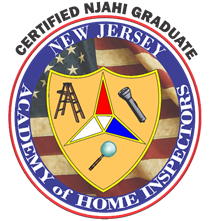
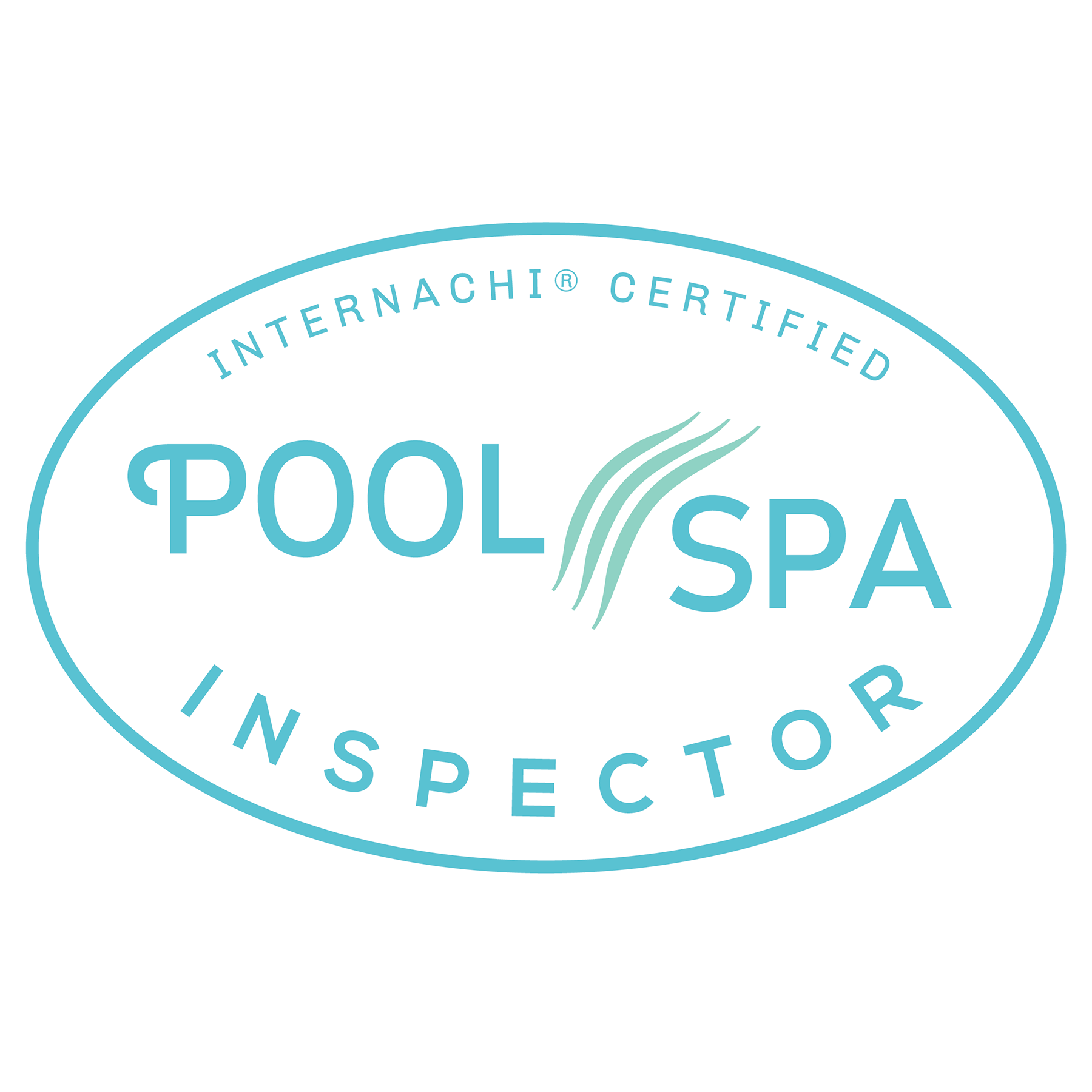
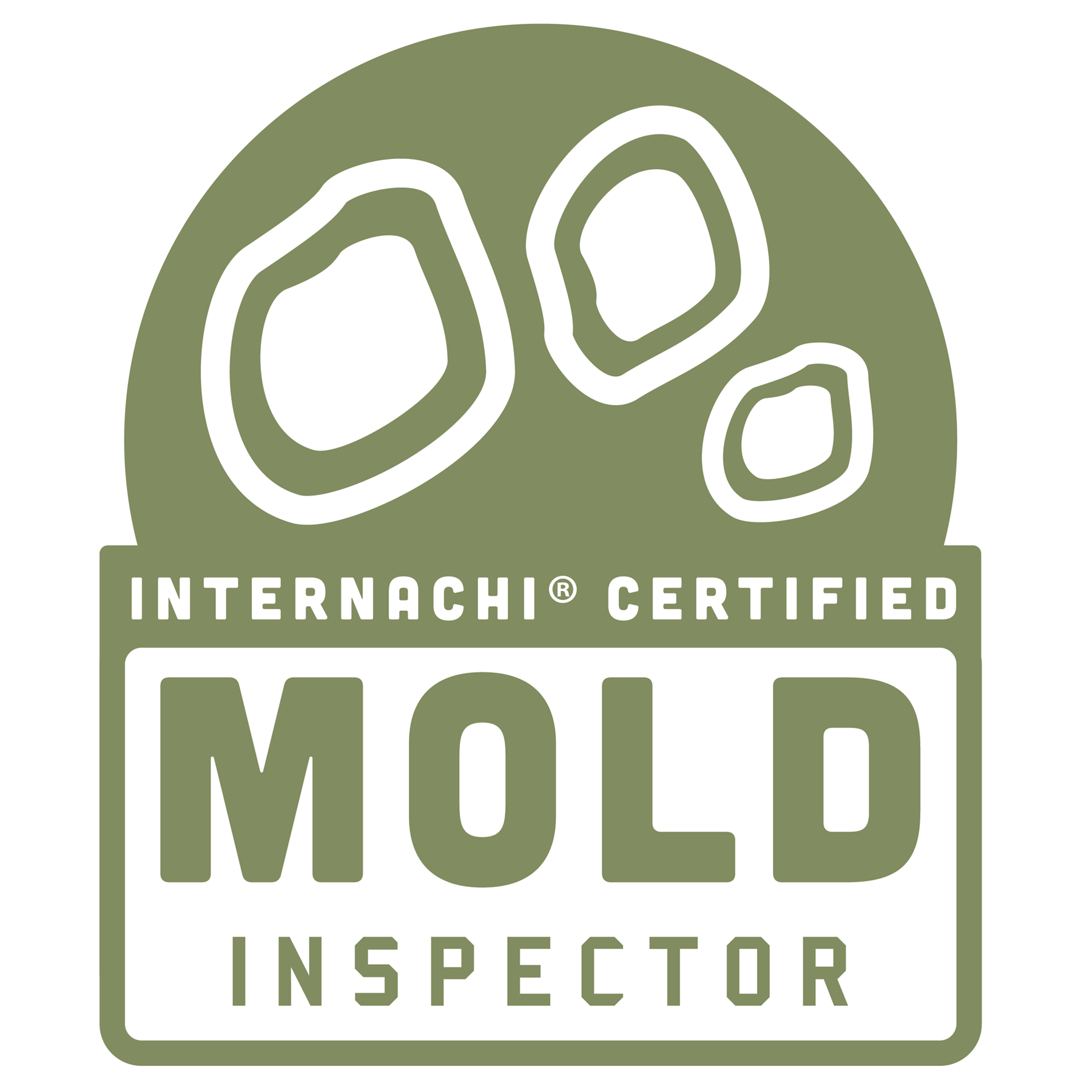
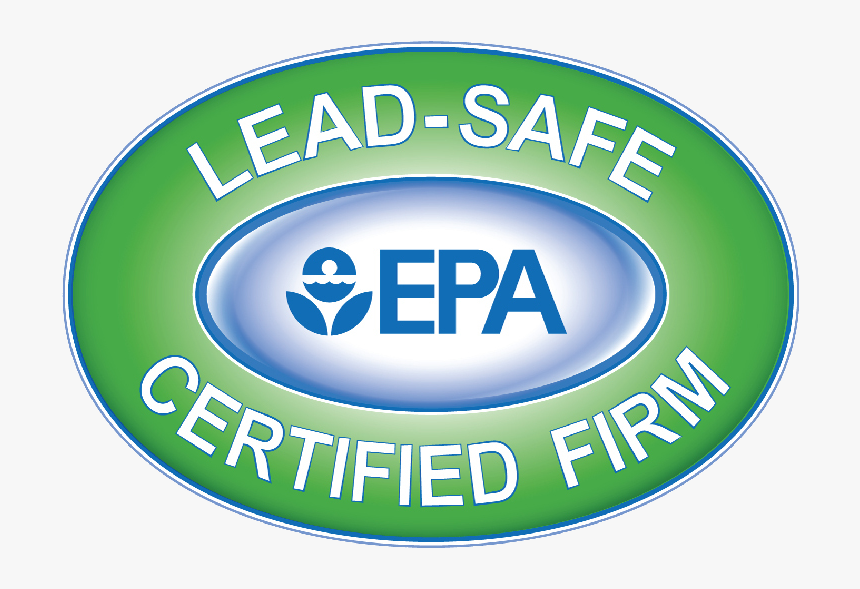
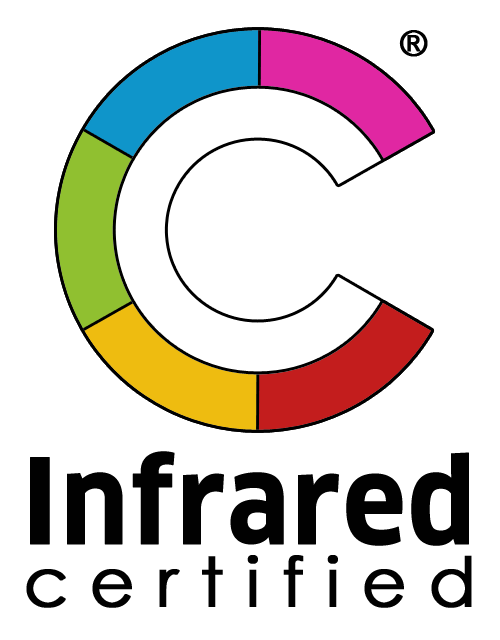
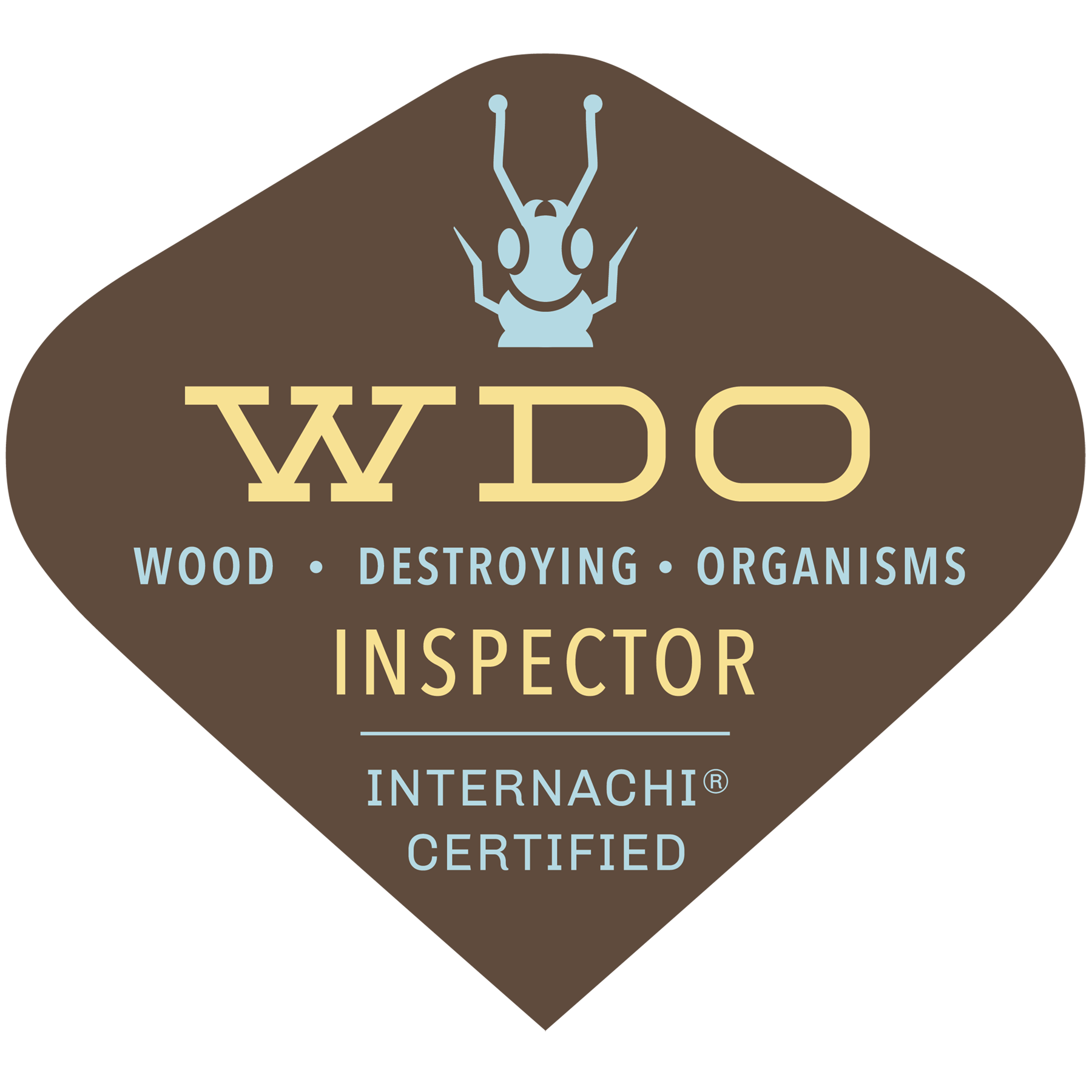


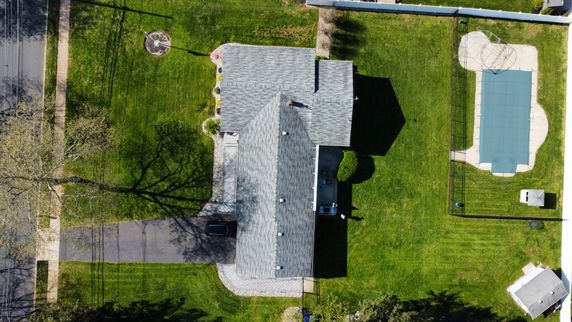

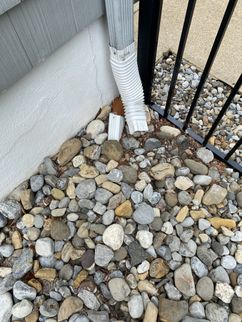

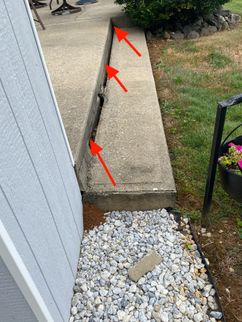
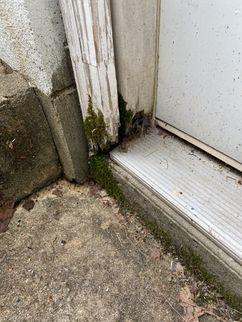
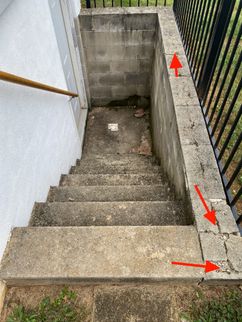
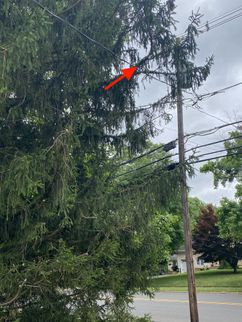
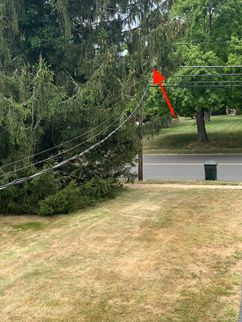
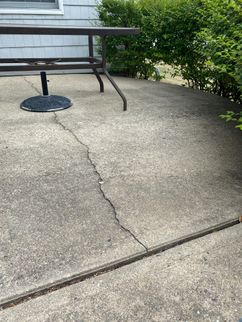
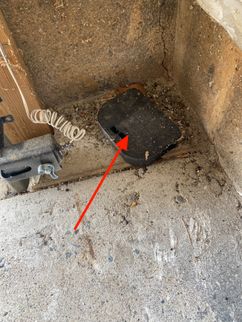




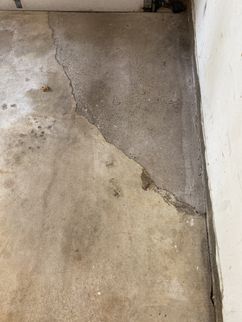

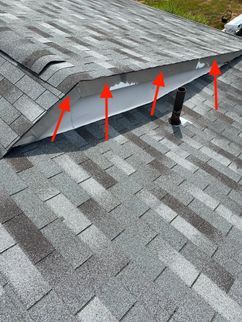
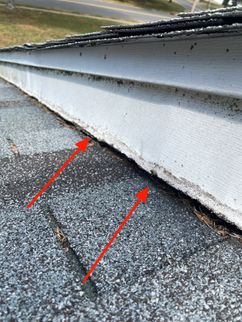
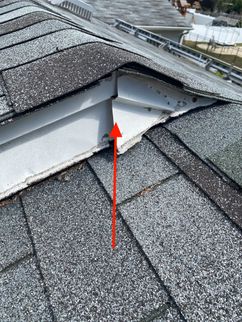
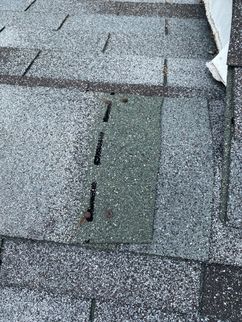
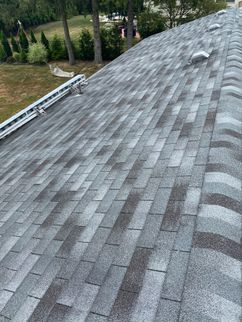

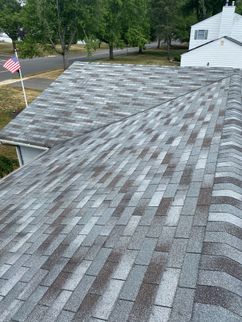
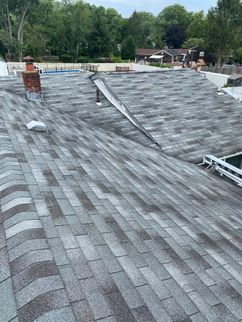

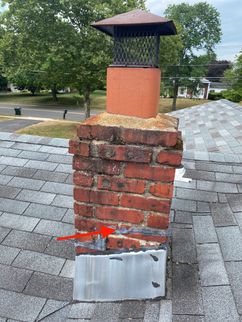
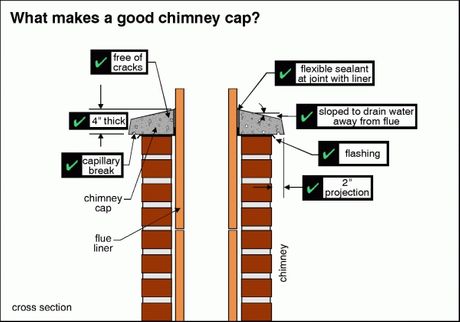
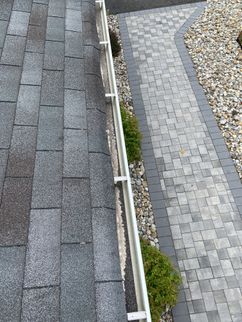

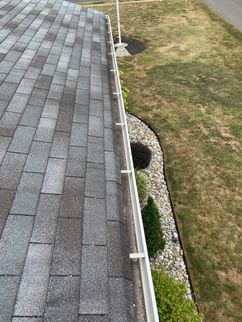
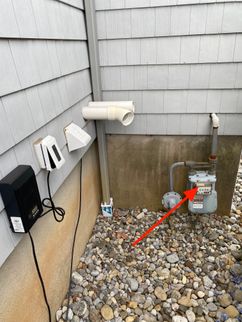
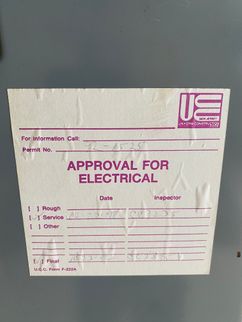
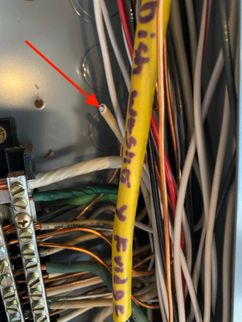
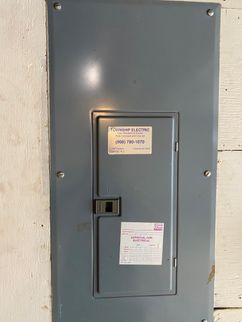
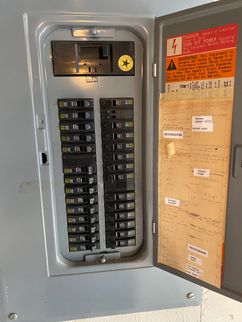
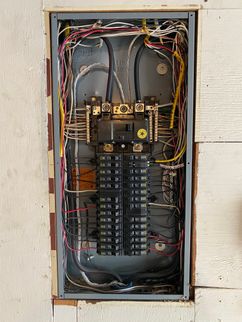
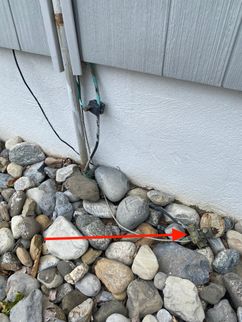
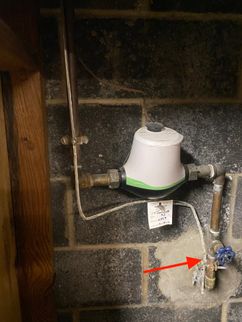


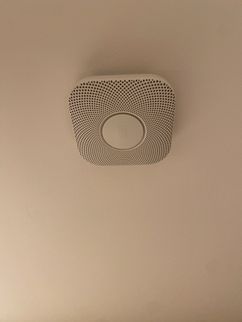
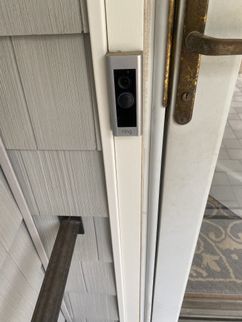
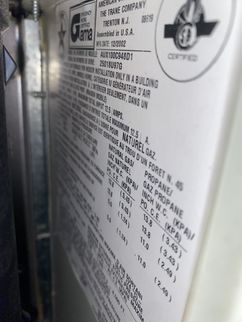
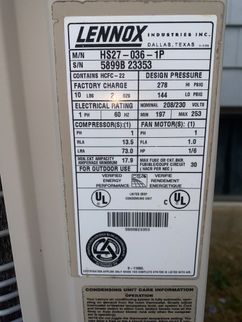
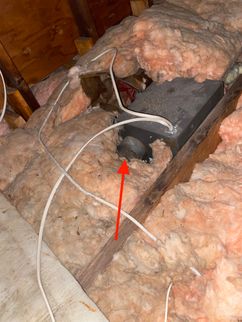
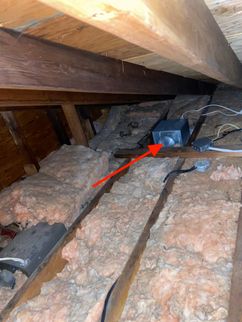
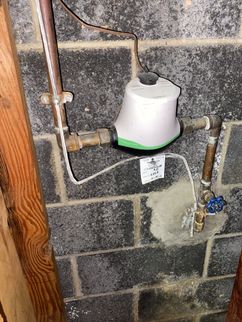
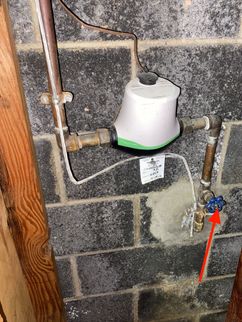
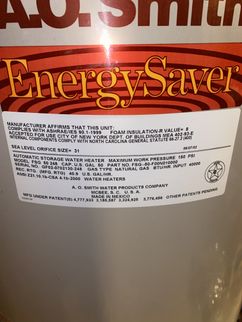
 (1) (1).jpg)
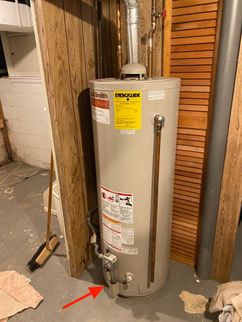
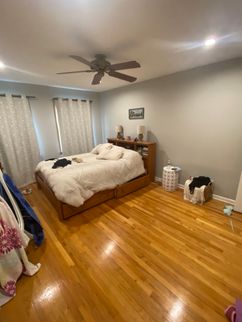
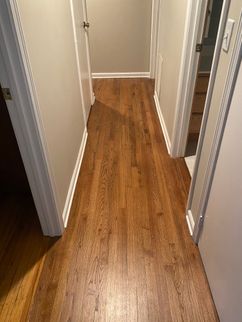
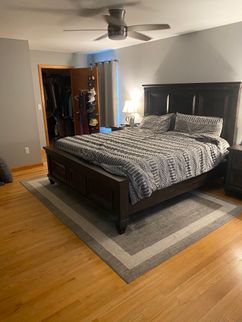

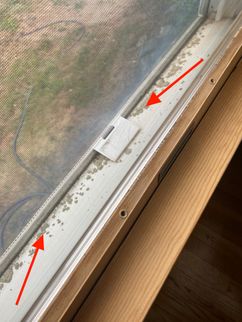
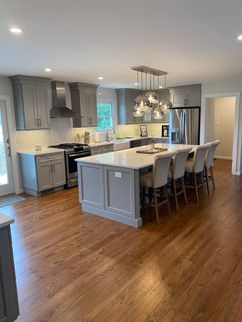
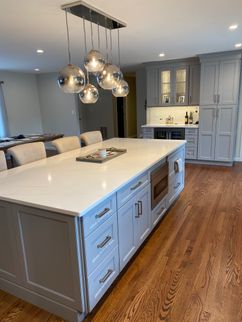
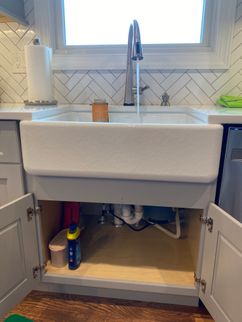

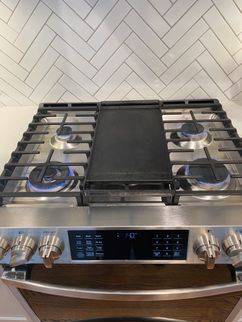
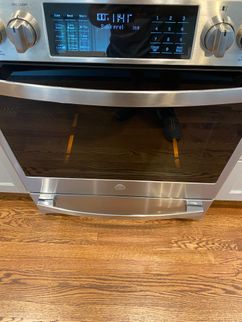

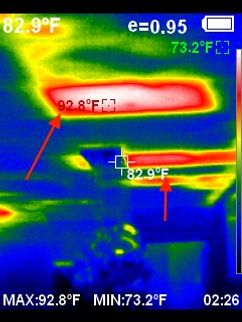
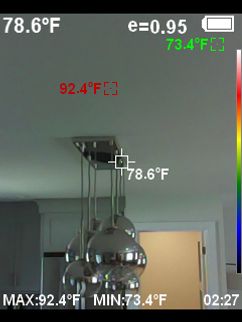
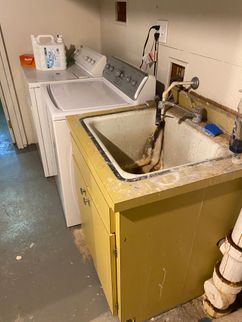
.png)
.png)
